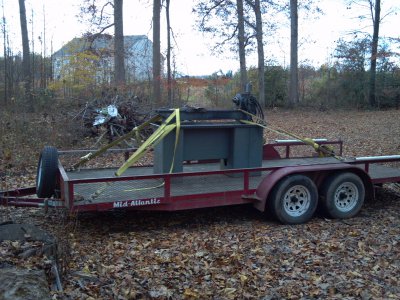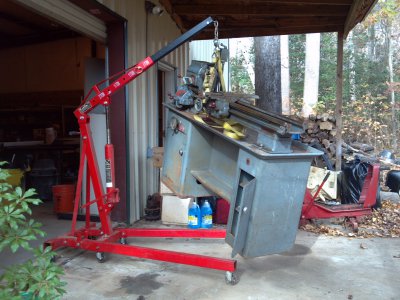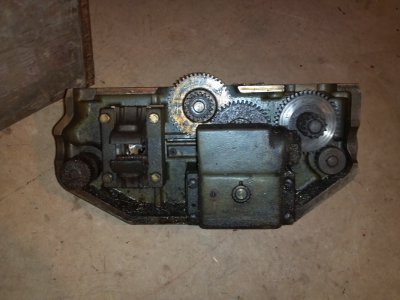- Joined
- Oct 7, 2013
- Messages
- 305
While I was driving around doing errands yesterday, it occurred to me that since I am planning on "restoring" the lathe, the amount of wear in certain parts is sort of irrelevant. If there is any significant wear at all, you need to change/repair the part whether it's a little or a lot, to bring it up to spec. Period. If you have to replace a bushing or screw or nut, it is no more trouble to replace one that's a little worn than one that's really hogged out. Same with any part. In fact, I'm more likely to replace things that are really shot than things that are just slightly worn, so in the end, I'll end up with a better restoration, that meets or exceeds spec, than if it were only slightly worn. So, I'm feeling much better about the lathe now. As for the initial cost, in a few years I won't even remember that extra couple hundred bucks.
I am lucky enough to have a dedicated workshop these days (used to be 1/2 the garage), so I wired it with 220V throughout. I'm watching for a decent 3ph motor to convert to an RPC. I want to run the lathe on 3-phase to take advantage of the on-off-reverse switch that came on the lathe. I may look at a VFD, but have some concerns about the low-speed hp and torque and damage to the 3ph motor. However, it seems to me that if I'm using the Reeve's drive in conjunction with a static or VFD converter, that may overcome those worries, since the motor will stay pretty much at a constant speed. Suggestions and comments in this area are welcome.
As for the Reeves, my initial inspection indicated the belts, both on the Reeves and the smaller ones on the spindle, as well as the sheaves, appear to be in good shape. I didn't detect any cracking or dried-out appearance. The large belts are slightly curled on the edges, but not to the degree I'd be concerned. I'll know more in the near future, as I tear things down for cleaning.
Astjp2, I'm still in VA right now, but it looks like I'll be moving to your neck of the woods next summer, so you can bet I'll be watching your thread. Keep it going. By the way, I'm sure glad you posted that picture of your lathe on the trailer with the engine crane hoist. I acquired one just like yours last week, through some horse trading, and it made moving the lathe a one-man snap of a job, with no worries about hurt backs, dropped lathes, or tipping over.


I am lucky enough to have a dedicated workshop these days (used to be 1/2 the garage), so I wired it with 220V throughout. I'm watching for a decent 3ph motor to convert to an RPC. I want to run the lathe on 3-phase to take advantage of the on-off-reverse switch that came on the lathe. I may look at a VFD, but have some concerns about the low-speed hp and torque and damage to the 3ph motor. However, it seems to me that if I'm using the Reeve's drive in conjunction with a static or VFD converter, that may overcome those worries, since the motor will stay pretty much at a constant speed. Suggestions and comments in this area are welcome.
As for the Reeves, my initial inspection indicated the belts, both on the Reeves and the smaller ones on the spindle, as well as the sheaves, appear to be in good shape. I didn't detect any cracking or dried-out appearance. The large belts are slightly curled on the edges, but not to the degree I'd be concerned. I'll know more in the near future, as I tear things down for cleaning.
Astjp2, I'm still in VA right now, but it looks like I'll be moving to your neck of the woods next summer, so you can bet I'll be watching your thread. Keep it going. By the way, I'm sure glad you posted that picture of your lathe on the trailer with the engine crane hoist. I acquired one just like yours last week, through some horse trading, and it made moving the lathe a one-man snap of a job, with no worries about hurt backs, dropped lathes, or tipping over.



